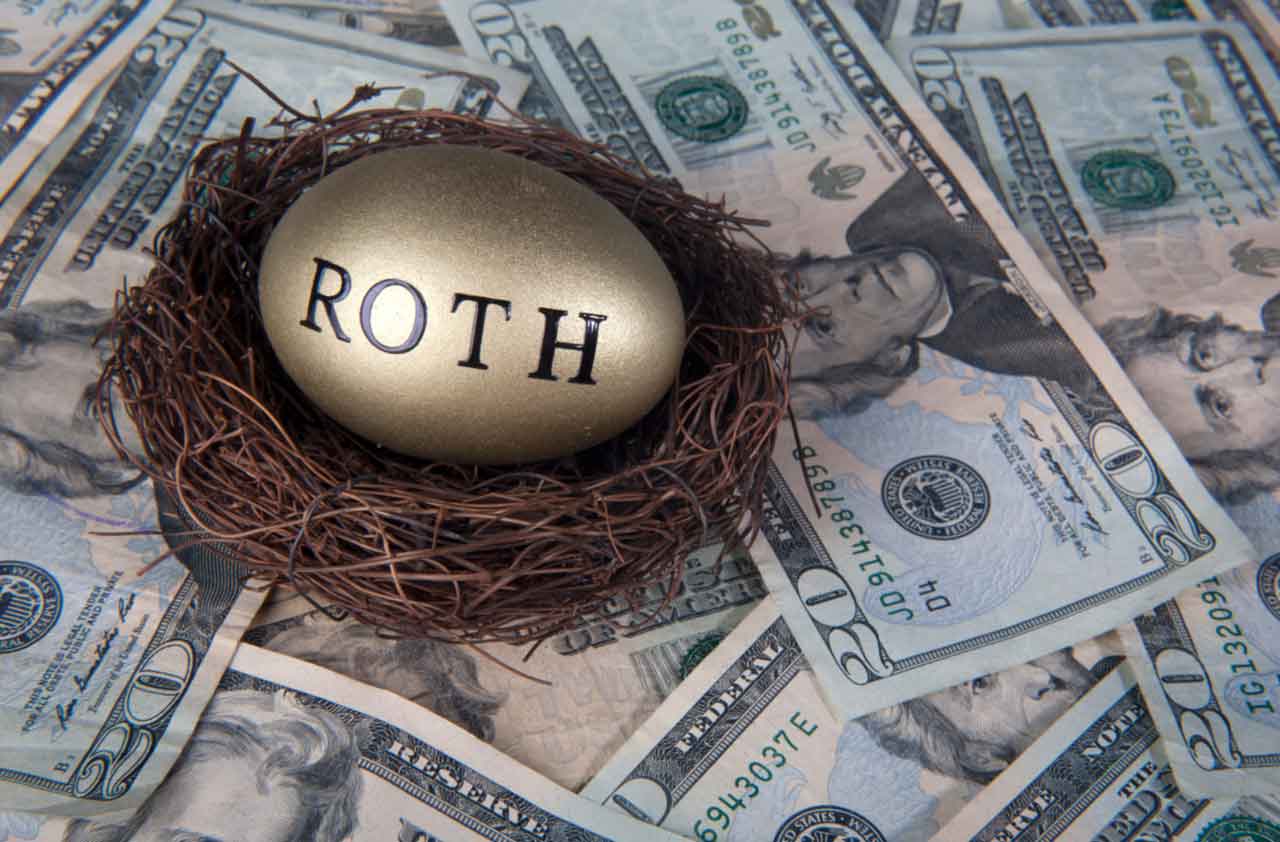7 Tips for Spending Down Your Retirement Savings
Saving for retirement is one thing.

Saving for retirement is one thing. Coming up with a plan to start drawing down your assets while making your money last a couple of decades (or more!) in retirement is a completely different thing. It takes a different set of skills and discipline to pull it off.
We asked our Wealth Creation channel contributors, who are all financial advisers, their top tips on retirement withdrawal strategies, and here's what they had to share.
This article was written by and presents the views of our contributing advisers, not the Kiplinger editorial staff. You can check adviser records with the SEC or with FINRA. Comments are suppressed in compliance with industry guidelines.

Remember: Sometimes Unconventional Thinking Can Pay Off
"Most financial professionals rely on conventional wisdom and one-size-fits-all strategies, including telling clients to spend down their assets in sequential order — starting with their taxable brokerage accounts, then their tax-deferred retirement accounts and then any tax-exempt accounts. ...
"For some retirees, that makes sense. ... (But others) may be able to do better just by switching things up a bit — flipping the withdrawal sequence and pulling the money out of their Roth account first, then their 401(k) and then their taxable accounts." — Sean P. Lee of Elevated Retirement Group
For more, see Creative Tax Strategies Can Stretch Your Nest Egg Years Longer

Get a Comfy Cash Cushion in Place
"To start, I recommend a multi-year cash-flow plan, covering at least five years. This provides a solid idea of how soon you’ll need to start tapping your nest egg. You may not need withdrawals right away, especially if you have income from other sources coming in the first few years of retirement.
"Even before the mapping process begins, I advise pre-retirees to build cash to cover at least one to three years of their estimated retirement withdrawal needs and place it in their preferred bank. For example, if you anticipate needing $75,000 annually to pay for all expenses, keeping $75,000 to $225,000 in cash is reasonable." — Lisa Brown of Brightworth
For more, see A Retirement-Withdrawal Strategy for Millionaires

Put the Bucket System to Work
"I like to use a system that divides retirement into five-year time frames — let’s say from 65 to 70, 70 to 75, 75 to 80 and so on. I suggest putting growth assets into that final bucket — the one that’s 20 or 25 years out — and if there’s a downturn, you don’t take withdrawals from that particular bucket. If you lose money in the final bucket (the growth bucket), you’ll have more time to build it back up before you need it, because you can still rely on your guaranteed income and your protected assets for income.
"And that’s the bottom line, isn’t it? You want to be sure your money lasts as long as you do." — Philip Detlefs of Investment Management Group
For more, see 3 Key Goals for Building a Retirement Income Plan

Go Ahead, Use Your Roth IRA, But Do So Wisely
"In our experience, most people never touch their Roth IRAs during their lifetimes. When we ask, they often explain that given its many advantages, they don’t want to squander this account. What’s the point of having a Roth IRA if you’re not going to use it?
"One powerful way to use your Roth IRA is in conjunction with your other tax planning. For example, if you’re looking to sell an appreciated position, covering some of your living expenses through Roth IRA withdrawals instead might allow you to qualify for (a 0%) rate on that gain." — Michael Yoder of Yoder Wealth Management
For more, see Which Accounts to Spend Down First in Retirement? 4 Tips

Determine Whether Waiting to Take Social Security Makes Sense
"Conventional wisdom says that if we don’t need Social Security, we shouldn’t take it until 70. While delaying Social Security comes with significant rewards in the form of 8% annual income increases between full retirement age and age 70, it is important to factor in your beneficiaries’ goals, life expectancies and tax situations into the equation.
"Depending on how long someone lives, 70 may be the best age to claim benefits for income purposes. That said, it may make sense for a couple to have the lower earner collect early (at age 62, if not working) and the higher earner to delay until 70.
"Remember: If you claim Social Security early, it will allow you to defer distributions from other investments. You can’t pass along Social Security benefits to the next generation, but you can pass assets." — Evan T. Beach of Campbell Wealth Management
For more, see Retirement Strategies for the 1%

Build a Withdrawal Strategy for Two
"Many (pension recipients) make the mistake of selecting the highest income per month they can get, using the single-life distribution option," on the premise that it will limit their withdrawals from IRAs and other retirement-savings accounts, says Michael Woloshin of Woloshin Investment Management.
But upon your death, "for most surviving spouses, losing that pension could be a major reduction to their income," forcing them to reach deeper into what's left of their nest egg later in life.
For more, see 5 Must-Do's to Start with for Retirement Success

Don't Follow Rules (Like the 4% Rule) Blindly
"The rule ... suggests that if you make annual withdrawals of 4% or less of your portfolio’s starting balance, and you follow a moderate stock/bond mix, you can expect your money to last for at least 30 years.
"Although the rule has come under question by those concerned with today’s conditions, it’s worth noting that the historical data supporting (the rule) contains several severe market scenarios, including the 1930s. The fact that it held up through the Great Depression should provide some degree of comfort.
"The problem is not that the rule is somehow broken. On the contrary, the issue we’ve found is that the rule is so widely followed that it often has an adverse effect on people’s behavior.
"When people attempt to reconcile their planning with the 4% rule, they tend to plot a straight-ahead course that is far too simple. For instance, they might turn on all possible income sources from day one, or take withdrawals proportionally from all accounts regardless of opportunities to reduce lifetime tax bills.
"Unfortunately, such planning can fall short of the challenge presented by today’s retirement reality. Interest rates are low, market valuations are high, and modern medicine continues relentlessly extending our lifespans. Proper planning has never been more critical." — Michael Yoder of Yoder Wealth Management
For more, see The 4% Rule: How a Good Principle Leads People Astray
Profit and prosper with the best of Kiplinger's advice on investing, taxes, retirement, personal finance and much more. Delivered daily. Enter your email in the box and click Sign Me Up.
-
 Healthy to 100: Secrets from Countries Where Retirees Age Best
Healthy to 100: Secrets from Countries Where Retirees Age BestLongevity is a team sport, according to author Ken Stern. Here's the secret sauce for living long, healthy lives from countries like Italy and Japan.
-
 My First $1 Million: Semiretired CPA, 68, San Francisco
My First $1 Million: Semiretired CPA, 68, San FranciscoEver wonder how someone who's made a million dollars or more did it? Kiplinger's My First $1 Million series uncovers the answers.
-
 6 Overlooked Areas That Can Make or Break Your Retirement
6 Overlooked Areas That Can Make or Break Your RetirementIf you're heading into retirement with scattered and uncertain plans, distilling them into these six areas can ensure you thrive in later life.
-
 What to Do With Your Tax Refund: 6 Ways to Bring Growth
What to Do With Your Tax Refund: 6 Ways to Bring GrowthUse your 2024 tax refund to boost short-term or long-term financial goals by putting it in one of these six places.
-
 What Does Medicare Not Cover? Eight Things You Should Know
What Does Medicare Not Cover? Eight Things You Should KnowMedicare Part A and Part B leave gaps in your healthcare coverage. But Medicare Advantage has problems, too.
-
 12 Great Places to Retire in the Midwest
12 Great Places to Retire in the MidwestPlaces to live Here are our retirement picks in the 12 midwestern states.
-
 15 Cheapest Small Towns to Live In
15 Cheapest Small Towns to Live InThe cheapest small towns might not be for everyone, but their charms can make them the best places to live for plenty of folks.
-
 15 Reasons You'll Regret an RV in Retirement
15 Reasons You'll Regret an RV in RetirementMaking Your Money Last Here's why you might regret an RV in retirement. RV-savvy retirees talk about the downsides of spending retirement in a motorhome, travel trailer, fifth wheel, or other recreational vehicle.
-
 The 24 Cheapest Places To Retire in the US
The 24 Cheapest Places To Retire in the USWhen you're trying to balance a fixed income with an enjoyable retirement, the cost of living is a crucial factor to consider. Is your city the best?
-
 The Six Best Places to Retire in New England
The Six Best Places to Retire in New Englandplaces to live Thinking about a move to New England for retirement? Here are the best places to land for quality of life, affordability and other criteria.
-
 Estate Planning Checklist: 13 Smart Moves
Estate Planning Checklist: 13 Smart Movesretirement Follow this estate planning checklist for you (and your heirs) to hold on to more of your hard-earned money.
